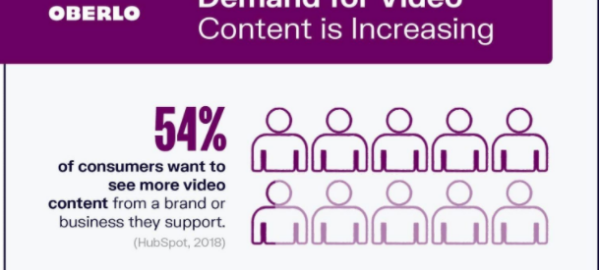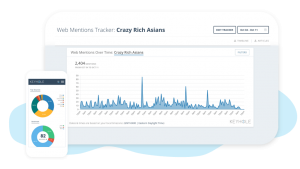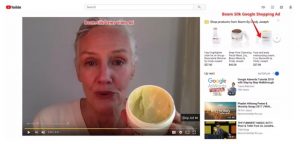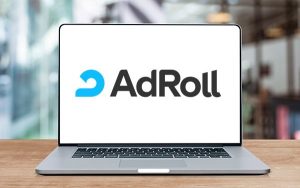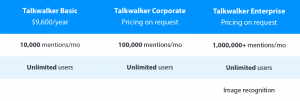What is Google Discover? To some, Discover is a new buzz word. But the Google app feature is an incredible content marketing tool you should be using. Why? We will address the “Why” in a moment below. However, in the fourth quarter of 2016, Google published that they were updating Google Now to improve user experience.
The idea was to split Google Now into two parts, which brought to birth Google Feed. Google developers designed the Feed to help consumers stay up-to-date with news updates and other topics of interest and manage their daily schedules.
But how does the Feed connect to Google Discover? Good question! Two years later, after the launch of Google Feed in 2016, Google rolled out Discover in September 2018. Thus, Google Discover is not an entirely new product, but an updated or rebranded Google Feed. It brings us to understanding what Discover represents and what it is not.
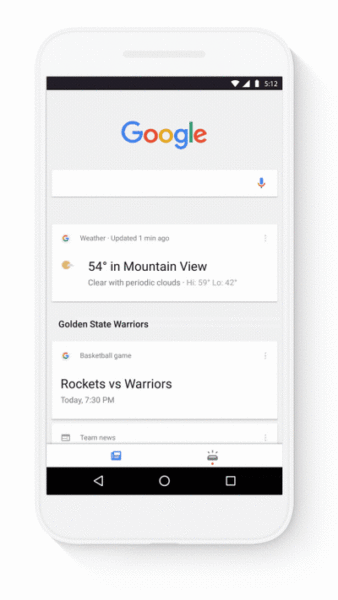
- Source visual via Google Product Update
What is Google Discover?
Google Discover is an advanced rebranded Google Feed, a feature on Google’s application software that suggests content to users on the grounds of your past Google searches. It means that the more you use the software, the better Google understands you to improve user experience (UX).
Also, Discover recommends a blend of content types, including evergreen content, news, and more. The upgraded Discover comes with a new design that makes exploring your subjects of interest easier than before.
But it stresses more on visual content materials, such as videos. Why? Because visuals are over 40% more persuasive. And almost 80% of consumers learn faster with visual materials.
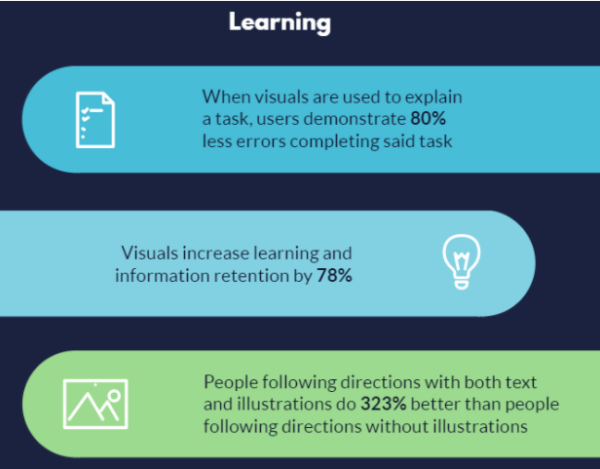
- Source graphic via Visme
So, it is logical to emphasize content types that have a psychological connection with people. Moreover, the rebranded feature lets you personalize your experience in the settings menu for the best results.
Why did Google rebrand the Feed to Discover?
The Google Feed feature was performing incredibly well. But when it attained 800 million active users per month, Google upgraded the quality and gave it a new name, Discover. It was one of Google’s major initiatives to improve the search giant’s platform, including increasing user search experience for the long-term.
The initiative comprises a series of updates that Google defined in three major shifts. The shifts are:
- A move from answers to journeys
- A switch from questions to a query-less way of acquiring information
- Transitioning from text to an excellent visual method to discover information
As a result, the updated Feed influenced search. However, keep in mind that before the rebrand, Feed was more of a text-based layout that shows headings and meta descriptions to users. But Discover is a mix of various content types. You can see what it looked like in the introduction visual.
But here is what the new Discover Feed looks like:
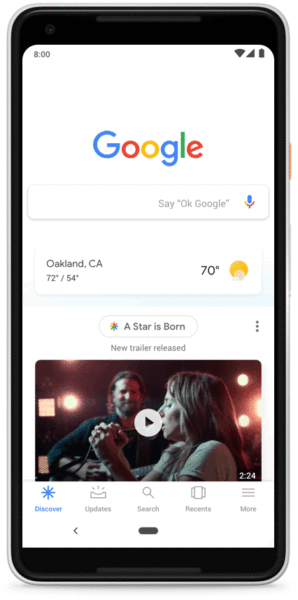
- Source visual: Google Product Updates
Notice that the advanced Discover Feed has a fresh design. It makes research topics of interest more effortless and exciting. It comes with new fresh topic headers that answers why you’re seeing specific Discover cards.
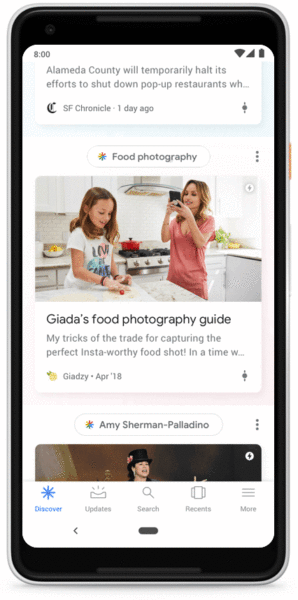
- Source visual: Google Product Updates
Beside each topic name on the new Feed is a Discover icon, and you’ll be seeing this icon in search for steadily increasing subjects. By tapping the “Follow” tab, you will start seeing more of the topic. Nevertheless, note that Discover is NOT Google News. So, what are the differences?
What is the difference between Google Discover vs. Google News?
With Google News, you find global trending stories and content materials that excite you. The Google News property shows you search results for news topics built on your search history. But with Google Discover, it’s a little different. How? Discover will show you content that matters to your interests without you performing a search. Moreover, Discover lets you customize the content you find fascinating. You can do so by following topics.
Why is Google Discover important to your SEO and content strategy?
Your content creation and publishing goal is to improve visibility and drive web traffic to your blog, website landing pages, or products and services page. That is where Discover comes to play. Discover is important because it is an aspect of Google search that enables you to stay on top of topics that matter to you.
It helps you explore new data by providing various content types, including videos, blog posts, and more. Also, the rebranded Google Feed does not limit its capabilities to presenting only new materials. It shows you valuable posts regardless of the published date.
Discover is vital to your content strategy because its reporting feature in Search Console allows you to see useful analysis of your content performance. The data will help you optimize your content better to rank higher and increase your odds to appear on Google Discover.
When analyzing your Discover data, you’ll see the following metrics:
- Traffic volume from Google Discover to your website
- Your top-performing content on Discover
- The frequency at which your website appears on Discover
- The difference in your content performance between Discover and traditional searches
How to personalize Google Discover Feed
Personalization is crucial when using Discover. So, to get started, from your android smart device, swipe right and click the header of any content that catches your attention. The Discover will henceforth populate your Feed with relevant content. From there, you can follow topics you find useful to allow Google Discover to show you similar or related content going forward.
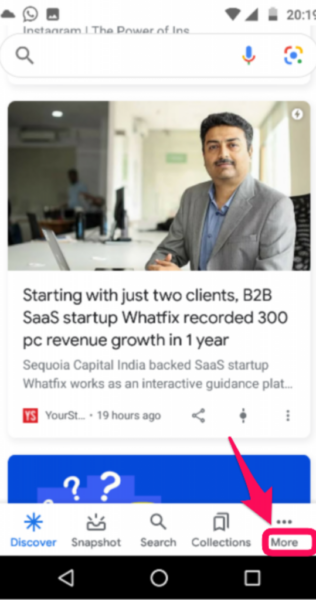
Nevertheless, if you choose to discontinue the following particular topics, you can pause it from the “More” button below your screen. Once tapped, it shows you a page where you’ll see your search activity, setting, data in search, and other parameters.
Hit the “Your data in search.”
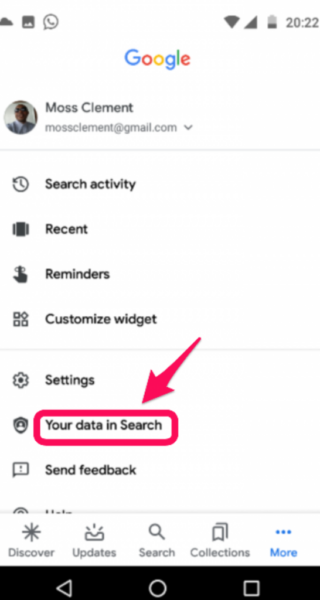
By tapping the “Your data in Search,” it opens a page where you will see your search history. At this point, you have the option to control what you want to see. That is, you can delete the searches you perform in the last hour or delete all inquiries.
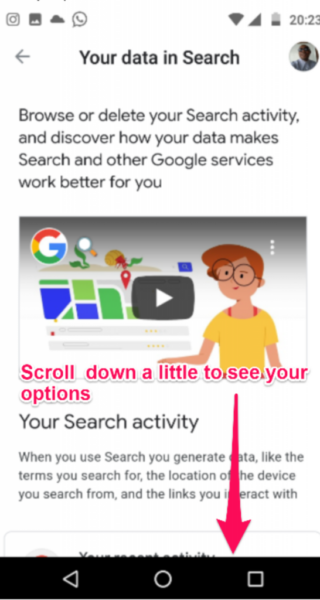
To see the options you have, scroll a little down the page. Please, see the screenshot below. That is how you customize Discover to show you related topics.
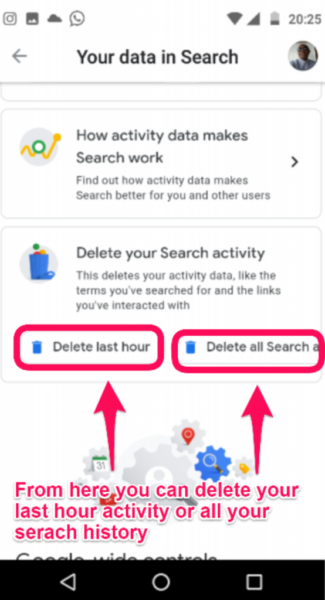
That said, because Discover is a terrific content marketing channel for attracting quality traffic, it must be part of your marketing toolbox. But to get your content on the Discover feed, it has to be eligible for Google Discover visibility.
Is your blog content eligible for Google Discover visibility?
Your site must be eligible for Google Discover visibility. But how? There are procedures to implement that will ensure your eligibility and improve your chances to appear on the Discover feed. Your website must be verified, indexed, and comply with Google News content policy. Also, your site should apply Google Webmaster Guidelines.
How to optimize your content for Google Discover Feed (in 12 Easy Ways)
While the pointers below are not the only steps for Discover optimization, we put together the twelve proven hacks that work. So, learn how you can make the most of your content and leverage targeted traffic from Discover.
1. Optimize your website for Google Accelerated Mobile Pages (AMPs)
One big thing for SEO is Google Accelerated Mobile Pages (AMPs). Why? Because they built it for speed, and speed is a crucial Google ranking factor. AMPs load almost immediately, which gives users a seamless entertaining website user experience (UX) on all devices, including desktop.
The faster your pages load, the more it contributes to user satisfaction. In other words, if your web pages load slowly, it reduces your chances to rank on SERPs. And also, your prospect of being picked up by Discover will become slim. For this, the Google Discover report feature offers comparison options to gauge Google AMP and non-AMP performances.
In view of this, by optimizing for AMP, you are providing mobile consumers with an exceptional user experience (UX) and also increase your chances to appear on Discover.
2. Produce outstanding blog content
Google Discover will not randomly pick any content to show users. Instead, it looks for quality, meaningful materials that will boost user experience. Remember that the principal objective of the rebrand is to enhance the user experience. Thus, along that line, Discover will always present users with quality content.
Therefore, it makes sense that you invest in your content creation strategy to provide your best. But if you’re struggling to create engaging content like the 65% of marketers, you can join the ranks of over 80% of marketers who outsource content creation to freelance writers.
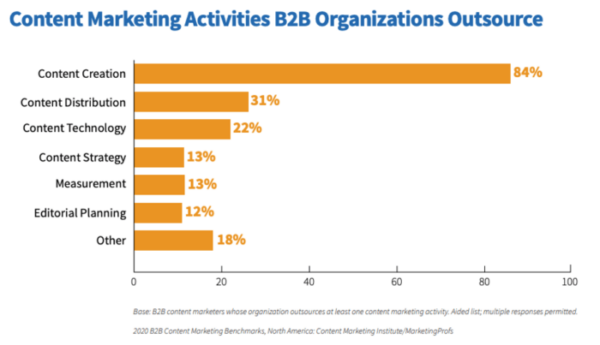
- Source graphic via Content Marketing Institute
The idea is to ensure that you publish result-driven blog content regularly. Moreover, ensure that your content aligns with the spatial order organization for optimal results. That way, you increase your likelihood to show up on the Discover feed.
3. Use high-quality visual materials
Creating high-quality content is not only about the text aspect of content creation. But it involves visual content types. Keep in mind that the new Discover stresses more on visuals, such as videos. Consequently, use more visuals to amplify your campaign to appear on Discover.
Indeed, the marketing statistics for 2020, compiled by HubSpot, reveals that 87% of video content marketers (visual marketing content) declared an increase in web traffic due to videos. Also, 80% indicated that videos helped them boost sales. Furthermore, do not use any size images in your content. Instead, your pictures should be at least 1,200 px wide. Why? Because Google said so.
The search engine giant mentioned that larger images generate better results on the Discover card. The following statistics will help:
- Marketers increased time on page by 3%
- Publishers achieved a 5% increase in click-through-rate (CTR) and a 3% boost in user satisfaction.
- More consumers (54%) want more videos than other content types.
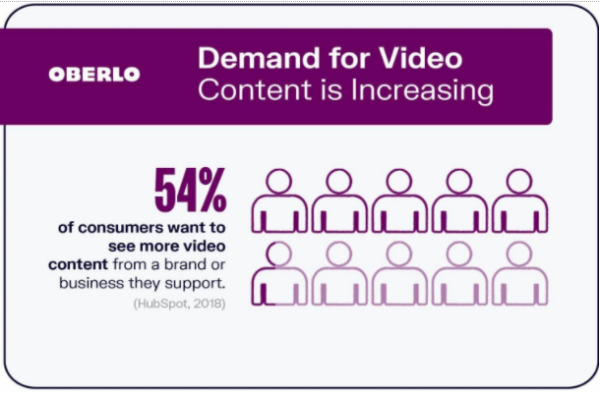
- Source graphic via Oberlo
I believe the statistics will inspire you to create more visuals.
4. Build trustworthiness
How can you build trustworthy content? Use social media to build trust. Social media puts more importance on the trustworthiness of your content. To develop your trust-factor, get people to share your posts across channels. The social signals you amass, such as likes, comments, and shares, add up to improve your SEO.
I recently published a post about how social media impacts your SEO. You can have a look. Given this, social signals are essential in building trustworthiness. The more others share, comment, and like your posts, you will generate social signals that improve your popularity and rate your content higher. In the end, it increases your content’s trustworthiness and also alerts Google that your content is fantastic.
Hence, Google will recognize your content as trustworthy material, which will effectively boost your eligibility to show up on Discover’s Feed. But note that users will only share your posts if you publish outstanding pieces of content. For instance, Facebook only ranks quality news since it’s algorithm update. So use the best social media management tools to streamline your marketing processes.
Nevertheless, develop a stable link building strategy to get you relevant backlinks from authority websites in your niche. The links you get back to your site helps to increase your trustworthiness as well.
5. Comply with SEO best practices
Following basic SEO rules is one of the best ways to get noticed by Google Discover. Why? Because it helps improve user experience and your SEO strategy. The audience experience is crucial if you want them to keep coming back. And with an improved experience, you will gain more dwell time on your page.
Please, note that page dwell time is different from “Time on Page,” a Google ranking factor. Dwell is the time a searcher lands to your website from SERP and the time he returns to the results page to Google. Thus, what SEO rules can you follow? Simple, optimize your posts and website using SEO best practices.
- Improve site speed
- Ensure your blog or website is mobile-responsive
- Your site must be mobile-friendly since more people access the internet via mobile devices. In fact, research indicates that people spent more time on mobile (over 70%) in 2019, and experts predict that the number will rise in the coming year.
- Secure your website with a secure socket layer certificate (SSL). The HTTPS is a Google ranking signal, and you can switch your URL from the HTTP to HTTPS by obtaining the SSL certificate.
6. Tell your people to follow you on Google Discover
Google Discover app lets you determine what brands and content topics to follow. However, your audience may not follow you if you don’t tell them. Therefore, the best way to get people to follow you is to ask them to add your blog to Google Discover.
As a result, Google will alert them whenever the app picks a new blog content from your site. It does not necessarily have to be a new blog post, but any quality content relevant to users’ queries and meets Google’s content publishing policy. So, if you want to add a blog or website, follow these steps in this article.
This process helps improve engagement with your existing blogging community while attracting new readers to your blog. Interestingly, the more people add your blog to their Google Discover interests, the search giant signals that your blog materials are relevant and useful to your audience. Thus, it enables you to amplify your search rankings.
7. Ensure that your web pages are crawlable
One critical aspect of SEO is to let Google know what your pages represent, content relevance, and more. But without Google crawling and indexing your pages, your odds of showing up on searches become slim. Therefore, make sure that your pages are easy to crawl and get Google to index your web pages. It is an essential step towards appearing on Discover.
There are several steps you can take to make Google index your pages faster. One such tactic is to create an XML sitemap for your website pages. However, it’s not about any page on your site, but those with quality content that engages your audience. You can also use tools like Google Search Console, Yoast, and or FastIndex to streamline the process.
8. Follow Google’s content publishing policy
Google stated that conformity with their blog content publishing terms and policy is vital if you want to appear on Discover Feed. It means that your blog posts and other content types must follow the Google News Guidelines and comply with Google Webmaster Guidelines.
Why is that so? Because Google endeavors to improve user experience by helping searchers to find content materials from blogs and websites that publish quality helpful pieces of content.
Thus, your posts must be:
- Original
- Purposeful
- Answer user queries
- Fresh (if you are republishing old content, update it with new ideas)
These touchstones will help improve user experience (UX), which is a Google ranking factor. View Google News content policy and Webmaster Guidelines as a step toward appearing on Google. It is not a guarantee.
9. Publish popular blogs and evergreen content
Why is this step necessary? Because Discover presents users with a blend of fresh blog posts and relevant evergreen content pieces according to users’ search history. It helps Google users to keep abreast with the latest in their selected interests. Also, publishing quality evergreen content will engage your readers, boost UX, and drive traffic for the longest.
This content creation and publishing strategy are essential since news-worthy and evergreen content is your ticket to appearing in Google Discover Feed. Google loves such materials and will pick them up to appear on Discover.
Once the post is on Discover, your site content will continue to show up on the rebranded Google Feed and drive organic traffic back to your blog. Moreover, Discover will help you build a loyal community of repeat readers since it will always show them your posts.
10. Research your competitors
In the above section, I summarized content types that Google Discover loves to show users. It will help if you take time to research your competition to see what kinds of posts they publish and why Discover chooses their content over yours.
Therefore, before you start researching top competitors, ask yourself the following questions:
- Why does Google Discover choose my competitors’ content instead of mine?
- What am I doing wrong that prevents my content from appearing on Discover Feed?
- What are my competitors doing differently from what I’m doing?
- Why does their content pop?
- Shall I invent fresh perspectives for my content to appear on Discover?
These few questionnaires will help you understand your competition and brainstorm ideas to get your posts on Discover. Also, follow relevant blog topics on Google Discover to enable you to know how the Google content marketing tool organizes the content it shows to users. The information you collect will give you valuable insights about user behavior and why Google Discover chooses your competitors.
11. Improve social feed engagement
Another way to optimize your blog posts for Discover Feed is to increase your social media feed engagement. In section four, I mentioned that social signals impact SEO. It means that your chances to show up on Discover Feed through social media involve improving your social feeds engagement.
The more of these elements (likes, shares, and comments) you get will make your posts rank higher on users’ feeds. But how can you improve social feed engagement? The most common is to create and post helpful content regularly. In section nine, I elaborated on creating popular blogs and evergreen content materials.
These are blog posts that drive consistent interaction and traffic. Then, share your posts across channels. Tell your followers to share with their friends around the web, and ask them to like and leave comments as well. This approach will boost your content visibility and expose you to a massive audience.
Thus, as your post reaches more people, Google will likely pick it to appear on the Discover Feed. Why? Because the content is doing incredibly well on social media, it is highly relevant and useful to your target market.
12. Get on Google Knowledge Graph or Google My Business Account
Both Google Discover Feed and Google My Business are properties of the search engine giant. Therefore, to heighten the odds for Google Discover to choose your content for its feed, creating an entity with Google Knowledge graph or Google My Business is essential.
Having your posts on Google Knowledge Graph (GKG) makes it easier to appear on Discover. Why is that so? Because Google’s primary goal is to provide users with the most matched results to their queries. Thus, Google shows the best results per search term, but it makes a broader connection between data.
This data includes details about people, demographics, and other essentials. And these results come in the form of:
- Rich snippets
- Image carousels
- People also asked
- Knowledge graph panel
So if your content is present within these are, you’re sure to appear on Discover. Therefore, get your GMB and GKG.
Frequently Asked Questions (FAQs)
What is Google Discover?
Google Discover is a rebranded Google Feed. It is a feature on Google’s application software that suggests content to users on the grounds of your past Google search history.
How can I track traffic from Discover?
The best way to track and measure your Discover traffic is to use the Google Search Console tool. It shows you how your content is performing from the Discover Performance Report.
Is Google Discover available on a desktop?
No. Google Discover does not currently have a desktop version.
Why is Google Discover not working?
Some of the reasons your Discover is not working could be that your Google Discover is disabled in the Google app. In this case, it will not work. Therefore, ensure that you enable it. To do so, open Discover on your mobile and tap the “More” tab. Next, tap “Settings,” >> “General.” You will see the Discover button. Turn the enable button on, and your Google Discover will start working.
What are the cards in Google Discover?
Cards in Discover are activity cards of your actions or operations while using the software. For example, if you perform frequent searches on the same search term, your activity card will appear on your search feed. Therefore, the more you use the app, Google gets to know you better and shows you cards of trending news and other variables in your region and globally.
How do I add Google Discover to my home screen?
To add Google Discover to your home screen:
- Tap the Apps icon to show all your apps while on your home screen.
- Locate the Google Discover app and long-press it.
- While holding on to it, drag the app icon to your home screen’s desired location.
Lifting your finger will safely place Discover on your screen. This tip is for Android users.
How can I disable Discover?
To disable Discover, open the app, and tap the ‘More” tab. Next, tap Settings >> General, and you’ll see the enable & disable button.
Wrapping up how to optimize your blog content for Google Discover Feed
Optimizing for Discover is not rocket science. Instead, it is a process of tweaking your content to make it better than your competitors and adding the essential elements of evergreen content. The tips in this article are not difficult to execute, and they will help you get along the lines of appearing on Google Discover.
Hence, the more unique your content is from the competition, the better your chances to show up. Therefore, make quality content and enhanced user experience a priority. Do you have more Google Discover optimization tips to add that will help our readers? We welcome your feedback in the comments section!
Originally published here.
Digital & Social Articles on Business 2 Community
(23)
